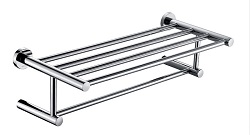The process involves heating the workpiece to a high temperature of up to 92,095°C using an intermediate frequency furnace after hot forming, followed by immediate oil quenching. Metallographic examination reveals a microstructure composed primarily of martensite. In the secondary range, the retained austenite is below grade two, and the hardness ranges between HRC 59 and 64. No new decarburization layer forms on the surface, indicating good surface integrity.
After tempering at temperatures between 460°C and 480°C, the material achieves a tensile strength of 1750–2000 MPa, a hardness of HRC 42–46, and a section shrinkage of 35% to 39%. These properties are characteristic of the microstructural transformation that occurs during medium frequency induction heating and quenching.
One key feature of this process is the phase transition behavior. Due to the rapid heating rate, the actual transformation temperature of the steel increases. The faster the heating, the higher the temperature at which austenite forms, resulting in finer austenite grains. This leads to a fine or cryptocrystalline martensitic structure after quenching, enhancing mechanical properties.
Additionally, during medium frequency induction heating, the alternating magnetic field interacts with the workpiece, influencing the phase transformation. Under the combined effects of magnetic field, thermal stress, and internal stress, the austenite remains stable and its substructure becomes more dense. This results in improved hardening efficiency compared to conventional methods.
Another advantage is the short heating time and high speed of the process, which significantly reduces oxidation and decarburization. As a result, the workpiece achieves better surface hardness and quality, making it highly beneficial for industrial applications.
From an economic perspective, medium frequency heating offers substantial cost savings. Thermal efficiency can reach 75% to 85%, far exceeding the 15% efficiency of traditional gas furnaces. For example, the production time per spring using this method is only 105 seconds, which is comparable to the general box resistance furnace but without the need for additional preheating or reprocessing. According to factory data from the past year, using medium frequency induction heating for springs has reduced electricity costs by over 60%.
In conclusion, medium frequency induction heating is particularly well-suited for large-volume, single-variety products such as hot-formed coil springs. It offers several advantages:
1. The fast and short heating process minimizes oxidation and decarburization, improving surface hardness and quality.
2. It is easy to automate and integrate into mass production lines.
3. The depth of hardening can be precisely controlled by adjusting the frequency.
4. After quenching, the surface exhibits a fine needle-like martensite structure, while the core retains sufficient strength and toughness, leading to a higher hardness than conventional heat treatment (HRC 35+).
5. The high thermal efficiency and minimal heat loss improve the working environment and reduce overall production costs.
This technology not only enhances product performance but also supports sustainable and efficient manufacturing practices.


towel rack,bathroom hardware,stylish towel holder
ONLEE HARDWARE CO.,LTD , https://www.onleehardware.com
